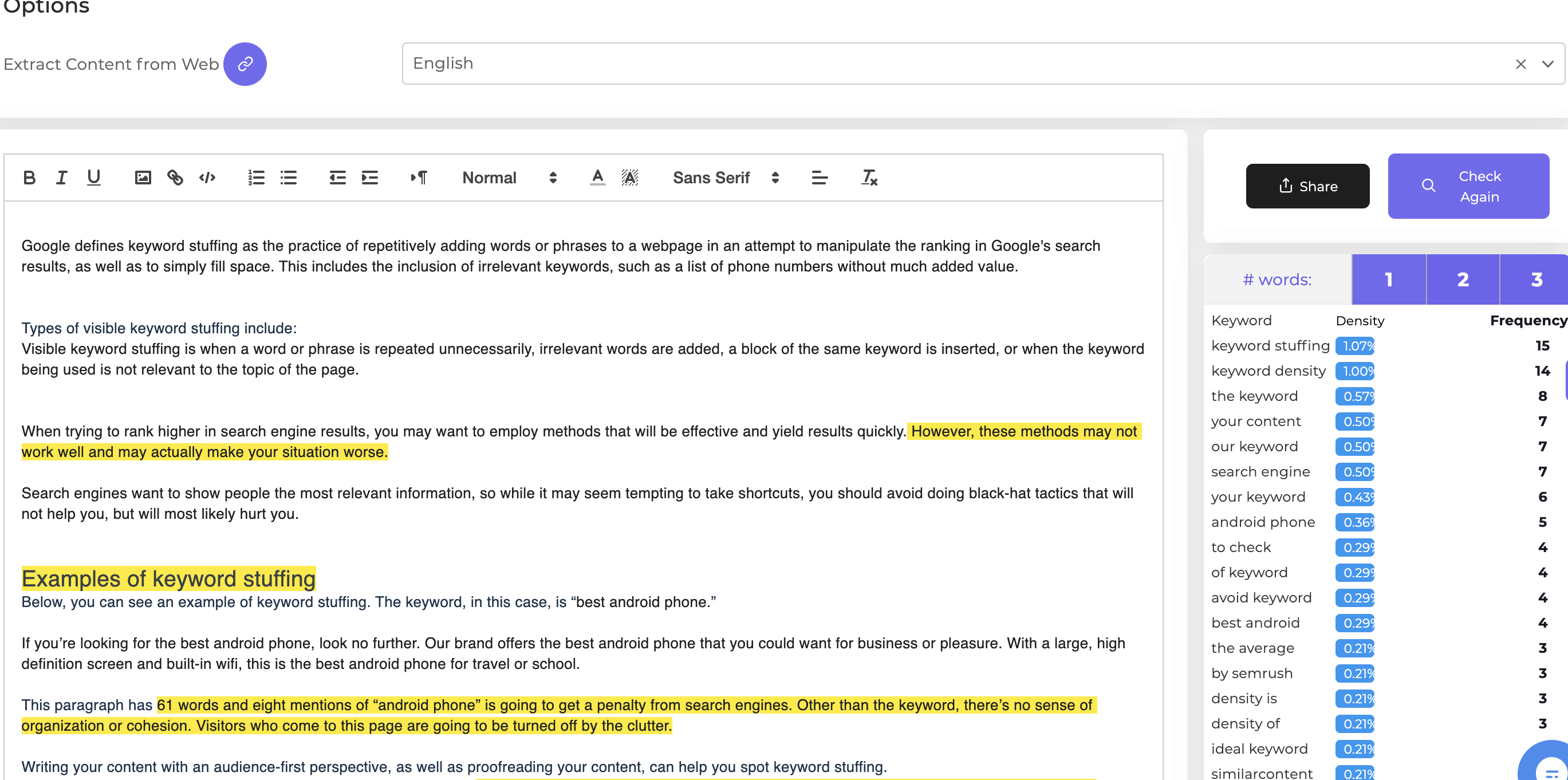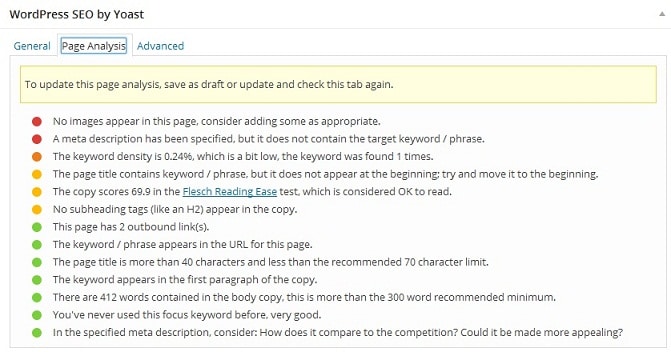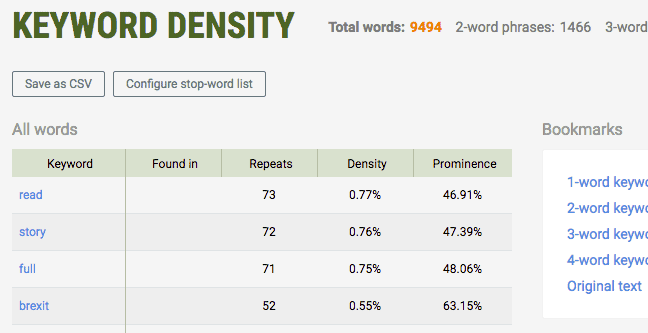3 Keyword Stuffing Checker tools to Check Your Content For Keyword Spamming
- Home
- /
- Blog Posts
- /
- 3 Keyword Stuffing Checker tools to Check Your Content For Keyword Spamming
Google defines keyword stuffing as the practice of repetitively adding words or phrases to a webpage in an attempt to manipulate the ranking in Google’s search results, as well as to include SEO keywords, such as a list of phone numbers without much added value..
Types of keyword stuffing:
Keyword stuffing is when a word or phrase is repeated unnecessarily, irrelevant words are added, a block of the same keyword is inserted, or when the keyword being used is not relevant to the topic of the page.
Search engines want to show people the most relevant information, so while it may seem tempting to take shortcuts, you should avoid doing black-hat tactics that will not help you, but will most likely hurt you.
Example of keyword stuffing:
Below, you can see an example of keyword stuffing. The keyword, in this case, is “best android phone.”
If you’re looking for the best android phone, look no further. Our brand offers the best android phone that you could want for business or pleasure. With a large, high definition screen and built-in wifi, this is the best android phone for travel or school.
This paragraph has 46 words and eight mentions of “android phone” is going to get a penalty from search engines.

Other than the keyword, there’s no sense of organization or cohesion. Visitors who come to this page are going to be turned off by the clutter.
Writing your content with an audience-first perspective, as well as proofreading your content, can help you spot keyword stuffing.
In most cases, you can measure the length of a paragraph by sight. but what if you’re writing an article that is long? In that case, You would need to check your keyword stuffing and density with a keyword stuffing checker tool.
How will our checker help your site?
Our Keyword Density tool will show you the number of keywords, and the frequency with which they appear, on any webpage you enter or copy paste content into the text input field, this tool will find all the keywords found on that webpage.
After finding all the words, it will then count how many times each keyword appears. These numbers are used to calculate the keyword density.

What is the ideal keyword density of a page?
According to Matt Cutts Keyword density is a term used to measure the percentage of keywords in a given piece of content and is not a number that has been set in stone.
The ideal keyword density varies by region and what other competitors are doing in the same area. 0.7% – 2% is good.
But again, this is not the Holy Grail. It’s just a good starting point for the casual marketer.
As you work through your keyword research, you’ll want to keep an eye on some leading indicators that will help you determine your success or failure with a keyword.
These leading indicators are weighted averages that take into account.
The ideal keyword density can be found by looking at the competitors who are already ranking on Google. This is calculated by taking the average keyword density of all of their pages.
And that what SimilarContent Content Optimizer is doing, SimilarContent Content Optimizer calculates the average keyword density of the top 10 ranking pages for the keyword you are targeting.
It then compares this average to what you have entered. If your keyword density is lower or higher than the average, SimilarContent Content Optimizer will let you know. We also let you know if your keyword density is too high.
3 Tools Used to Check Keyword Stuffing
There are some really cool tools you can use on the internet to check whether your content is keyword stuffing, one of them is built-in with WordPress plugins like Yoast SEO, and another one is a Chrome Add-on like SEO Quake by Semrush.
There are also web apps like SimilarContent that has a keyword density checker.
Yoast SEO Plugin

The Yoast SEO Plugin is a free WordPress plugin that can help you avoid keyword stuffing and help you create your blog posts.
All you need to do is download the plugin, and install it with your WordPress theme.
SEO Quake by Semrush

SEOQuake is a chrome add-on by semrush in which you get a detailed and structured report on all keywords found on the page.
Visualize data in the keywords cloud and narrow down your search using powerful filters.
Keyword Density Checker By SimilarContent

Keyword Density Checker from similar content will save you time because you won’t have to do this manually. Just paste the text or link of your article into the search bar and it will show you which keywords you have mentioned too many times.
If your percentage checks out too high, no worries—just swap some of those keywords with synonyms or other similar terms.
Here’s an example: In our blog article, Create Powerful SEO Content for Any Situation With These 3 Steps, the keyword density for the target keyword phrase “SEO content” is 0.85%. And we used that phrase in each of these recommended spots—all great places for keywords.
How to avoid keyword stuffing without any SEO tool
Make Synonyms Your Friend
To avoid issues with keyword optimization gone wrong, replace excessively repeated keywords with synonyms.
There are plenty of synonym tools that can be used to generate a list of related words.
But keep the intended audience in mind when doing this. You’re not going to do yourself any favors by using obscure synonyms that immediately confuse readers.
Use Your Keyword Research Results
You can avoid the need to stuff keywords by making sure to take into account what you learned from your keyword research. Common tools can also help you generate some keywords.
By looking at those lists you’ll be able to change around the words so the same ones don’t need to be repeated too often. You’ll still be getting good leverage even by doing that.
Use LSI Keywords
The idea of Latent semantic indexing (LSI) keywords is they are keywords that are related to a topic and can be used as a guide for search engine crawlers.
This way, website owners can avoid keyword stuffing and may not have as many problems with it.
What’s more, if LSI keywords are used properly, Google and other leading search engines will see them as being semantically-related to a topic.
Write naturally
Be mindful of your audience when you write by thinking of how your topic affects them and providing them with a great user experience.
One of the most common reasons for keyword stuffing is the belief that you are writing for search engine algorithms.
Remind yourself that you are writing for humans.
The thing is, if you just write in a style that is natural and makes sense to human readers, then everything else will fall into place.
Conclusion:
To avoid keyword spamming in your articles, blog posts, and backlink texts, always keep your readers in mind when producing great content.
The more users stay on your page and enjoy your content, the more Google will rank your content as being relevant and helpful to the community.
And the better you will rank on the search engine results page.
Using keyword checker tools and other SEO marketing tools helps in getting the right keywords for your content. As you have read, it’s not just about writing and publishing content.
It’s about producing contents that readers love when they land on your page, and converting these users into paying customers. You need to create, update and optimize your contents for SEO.
.